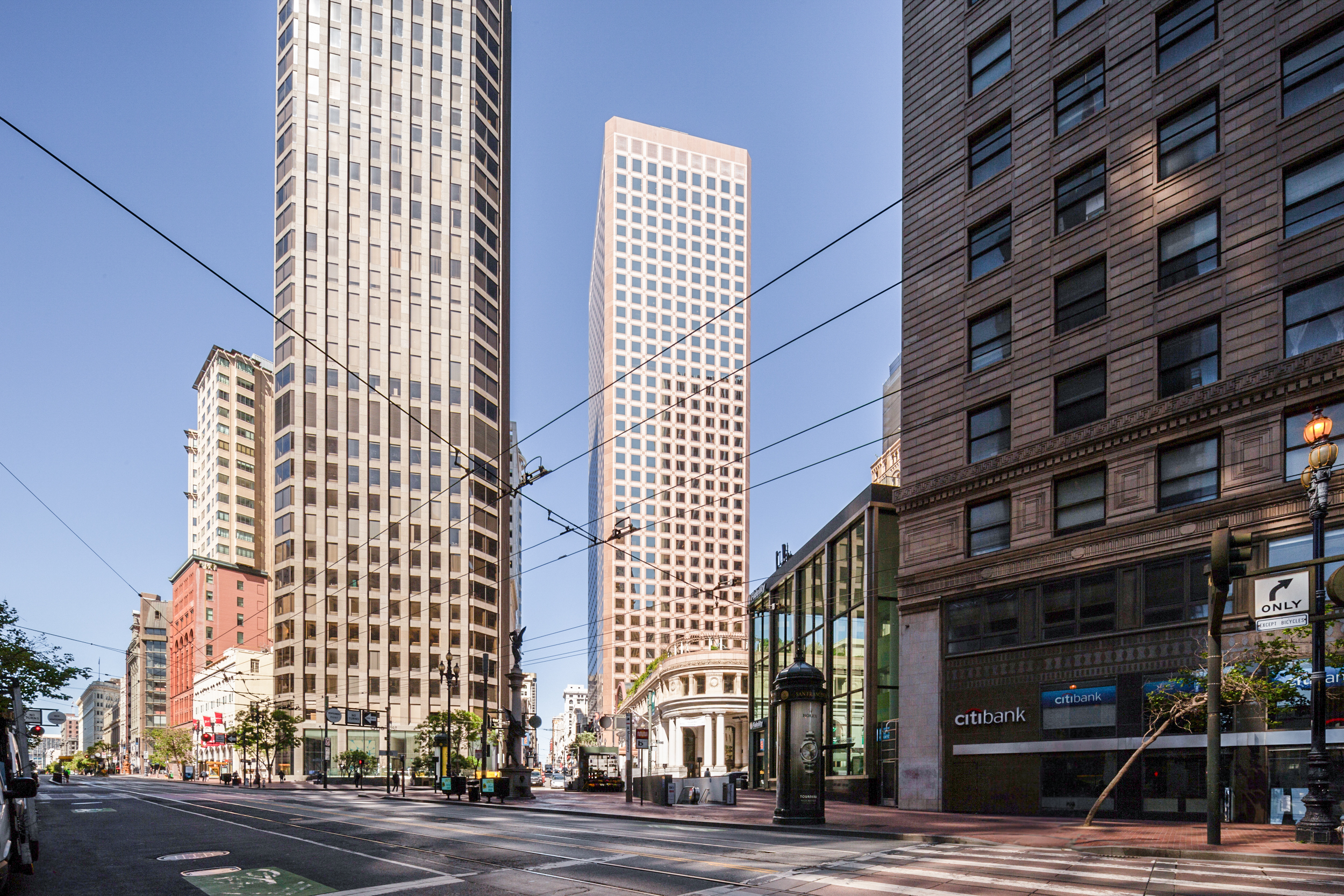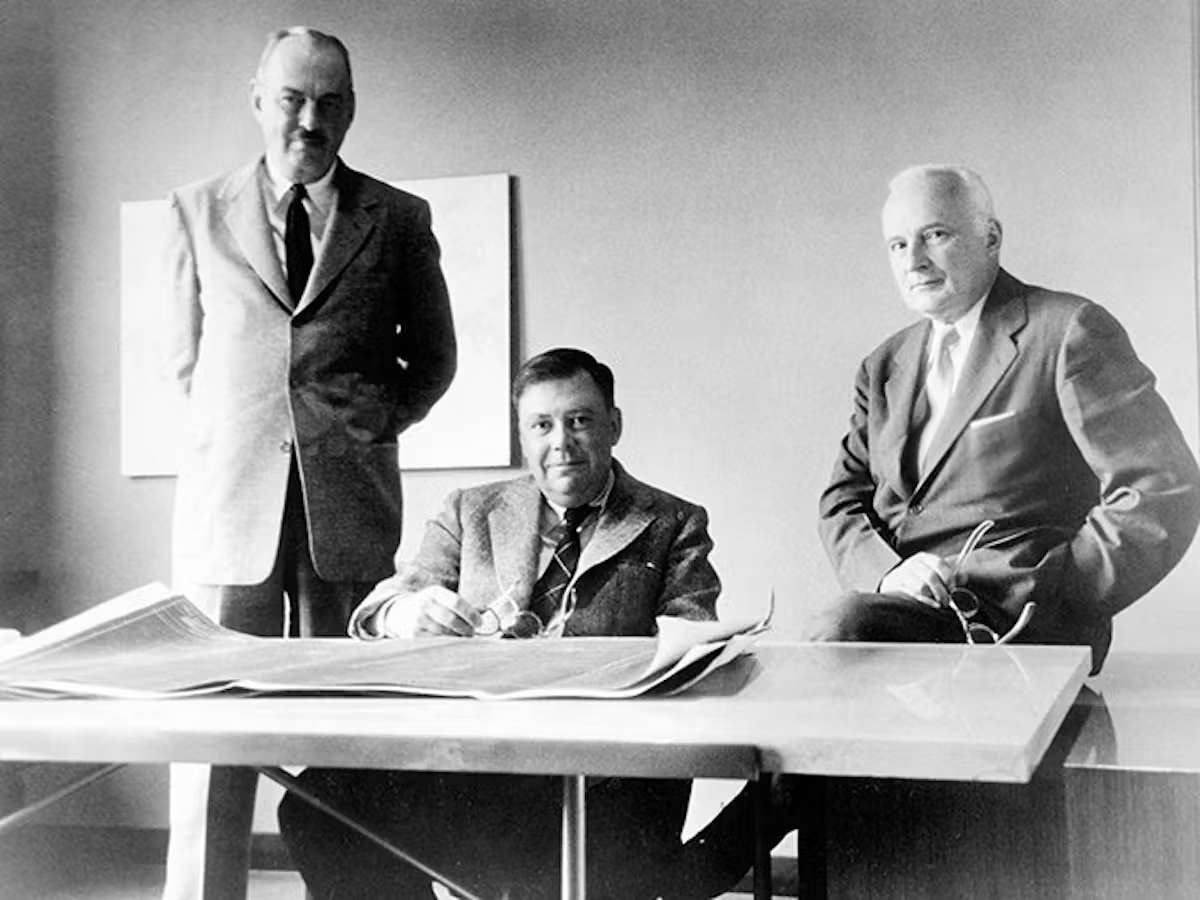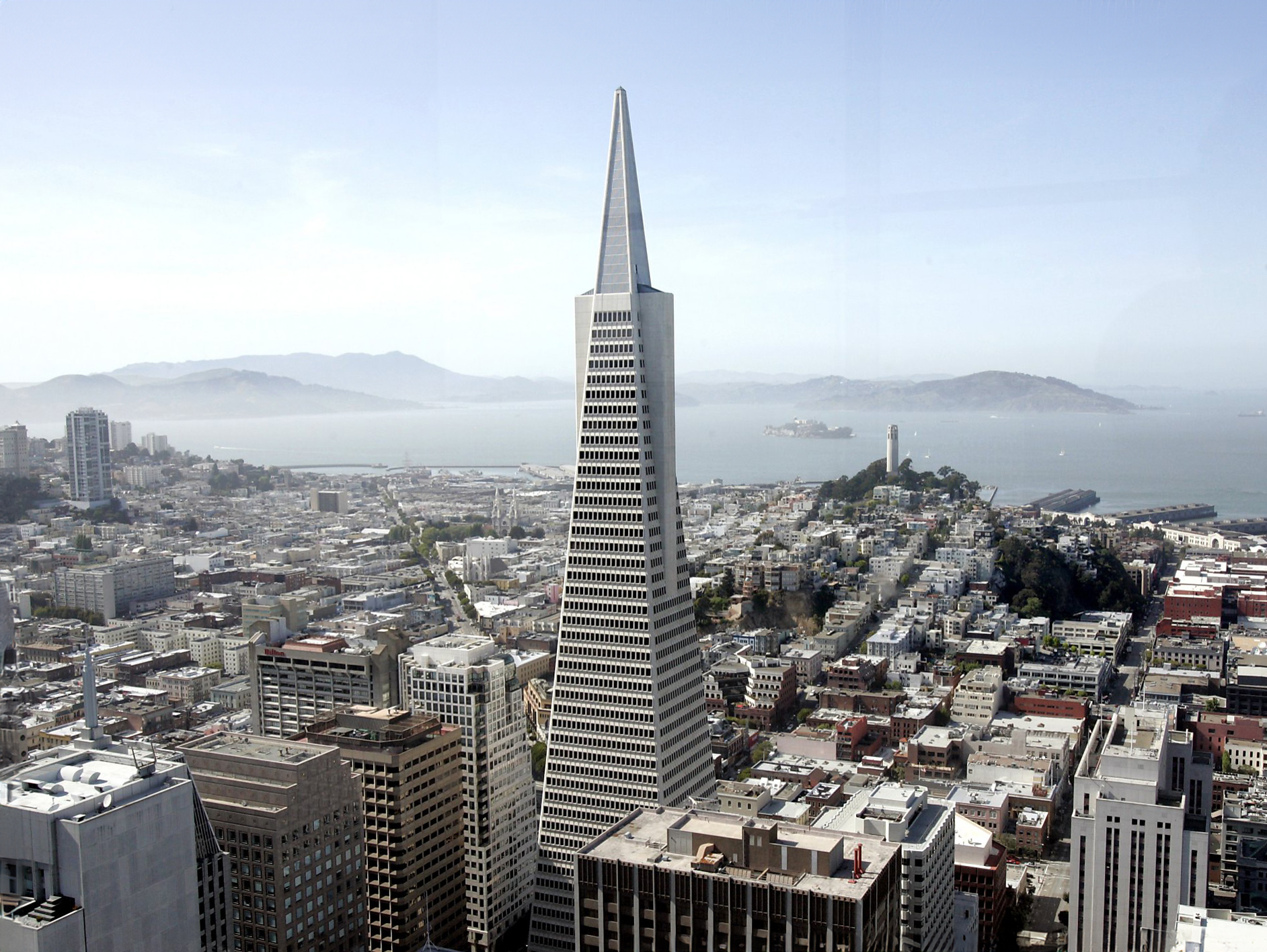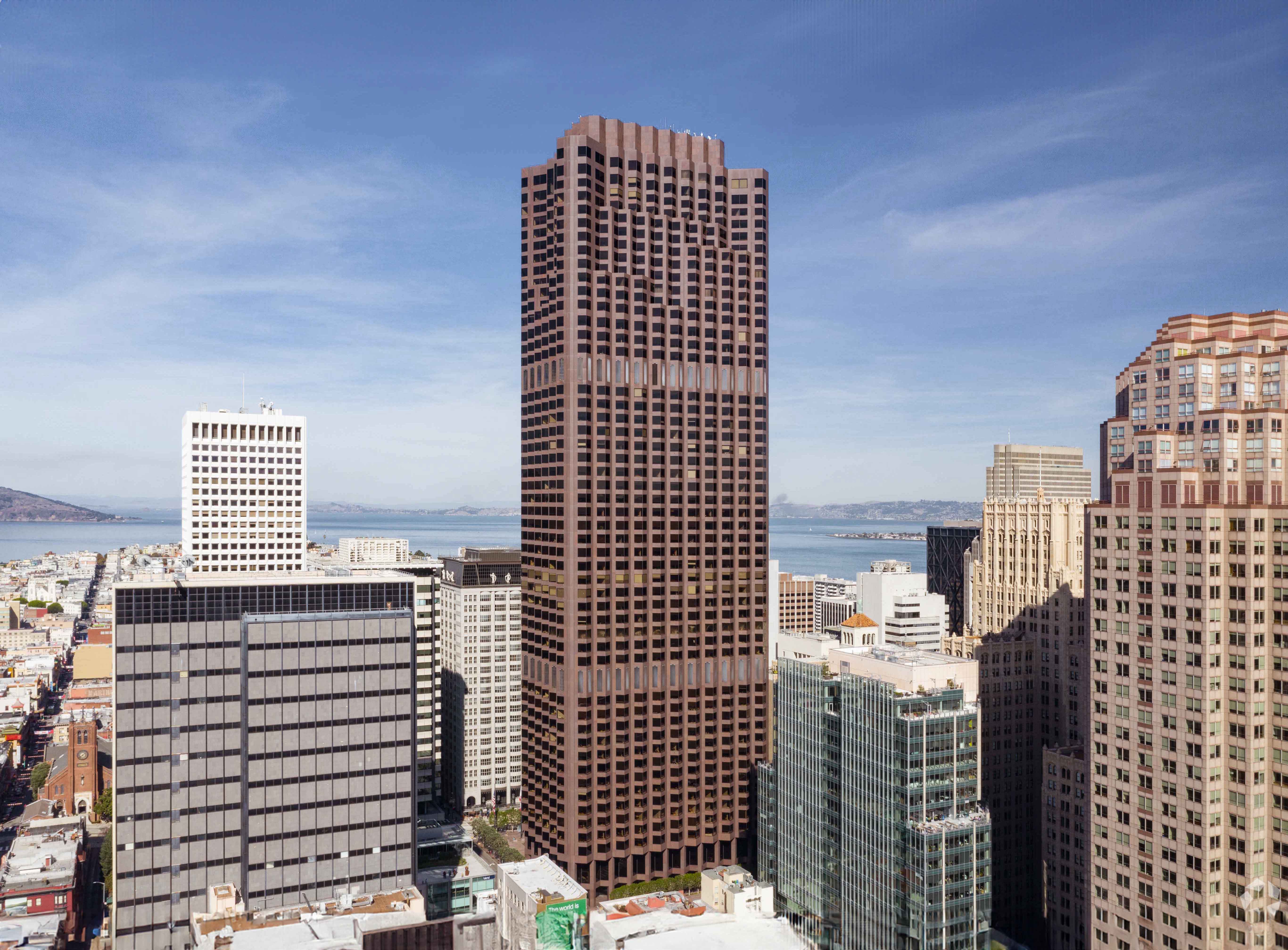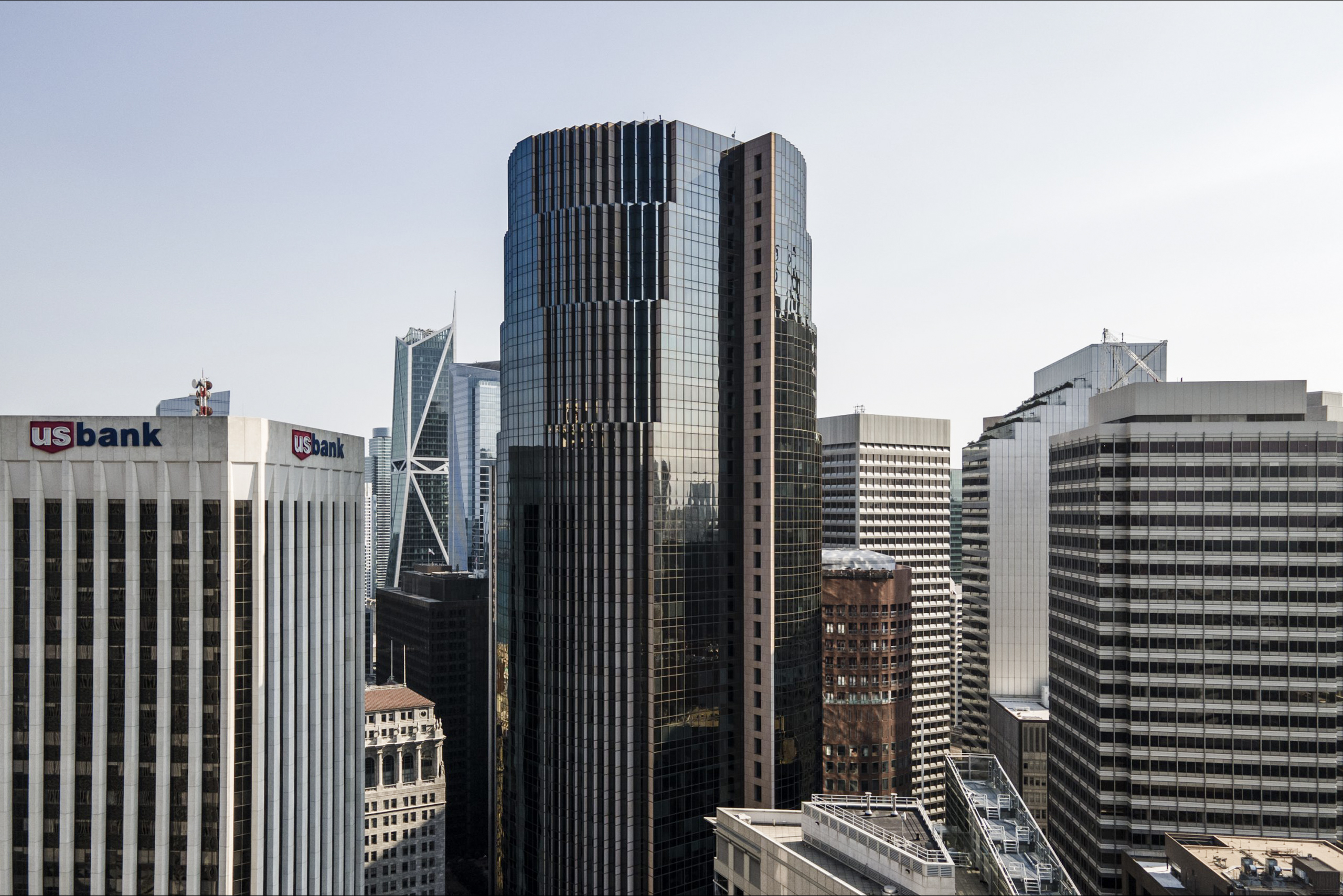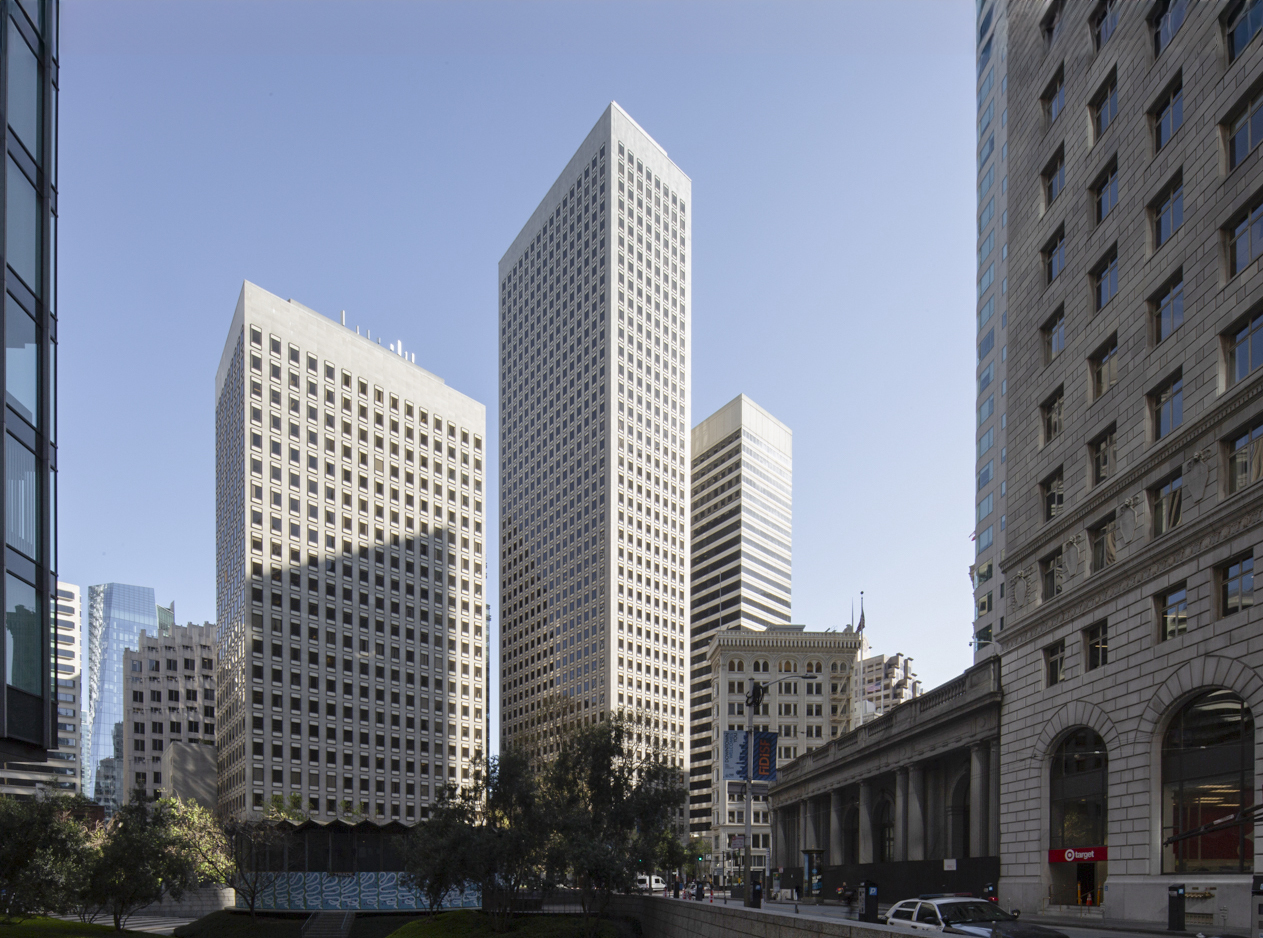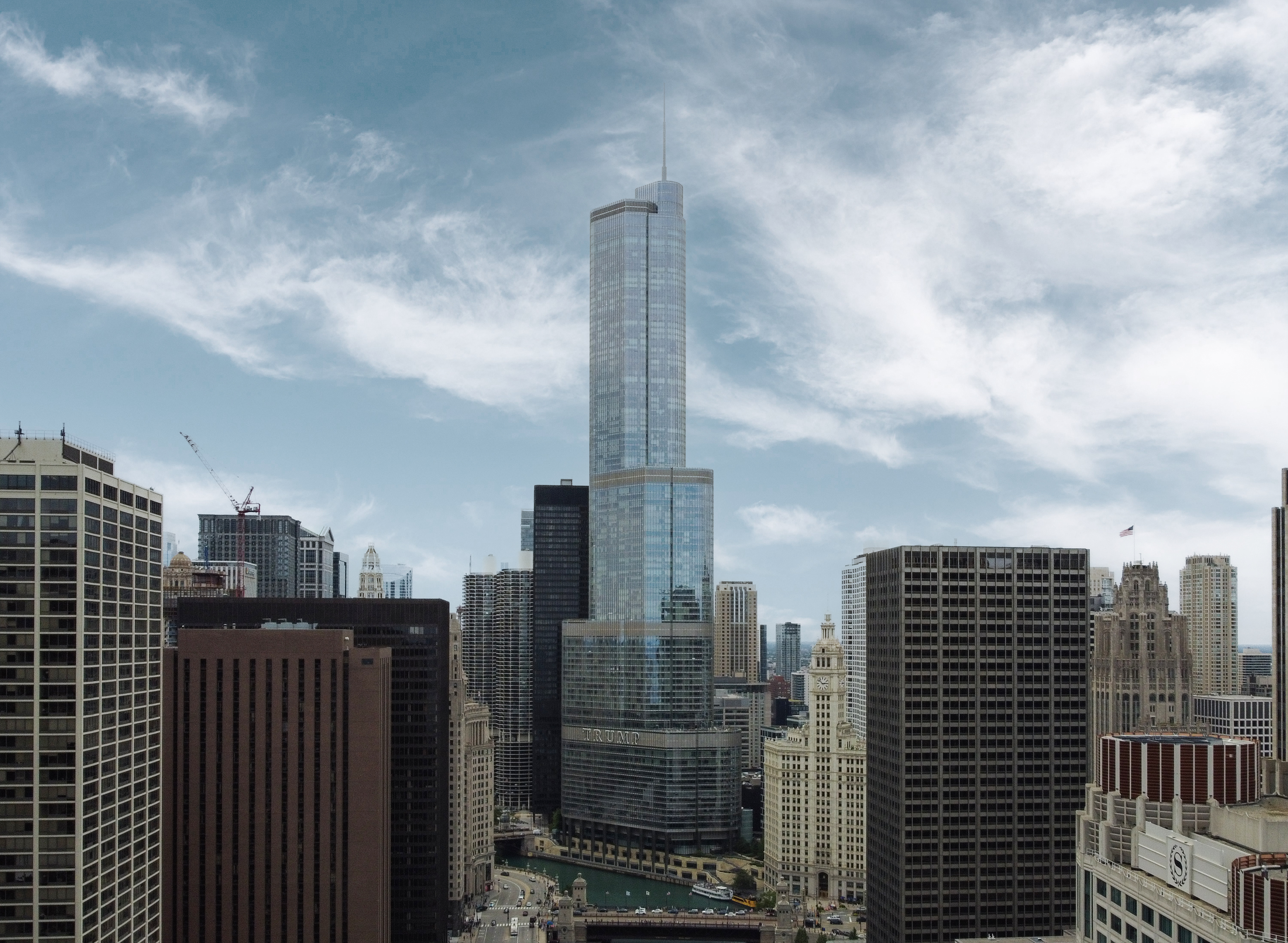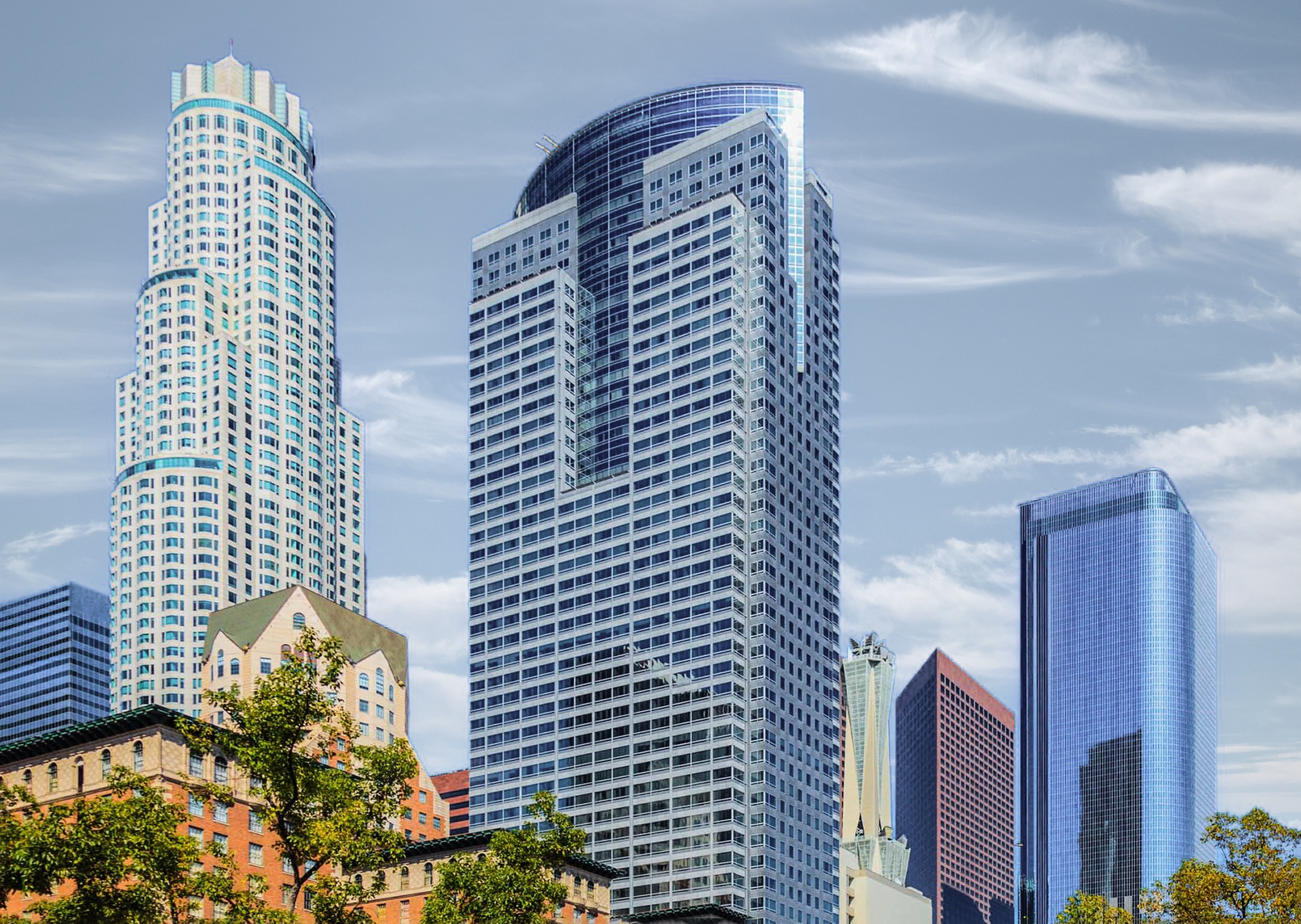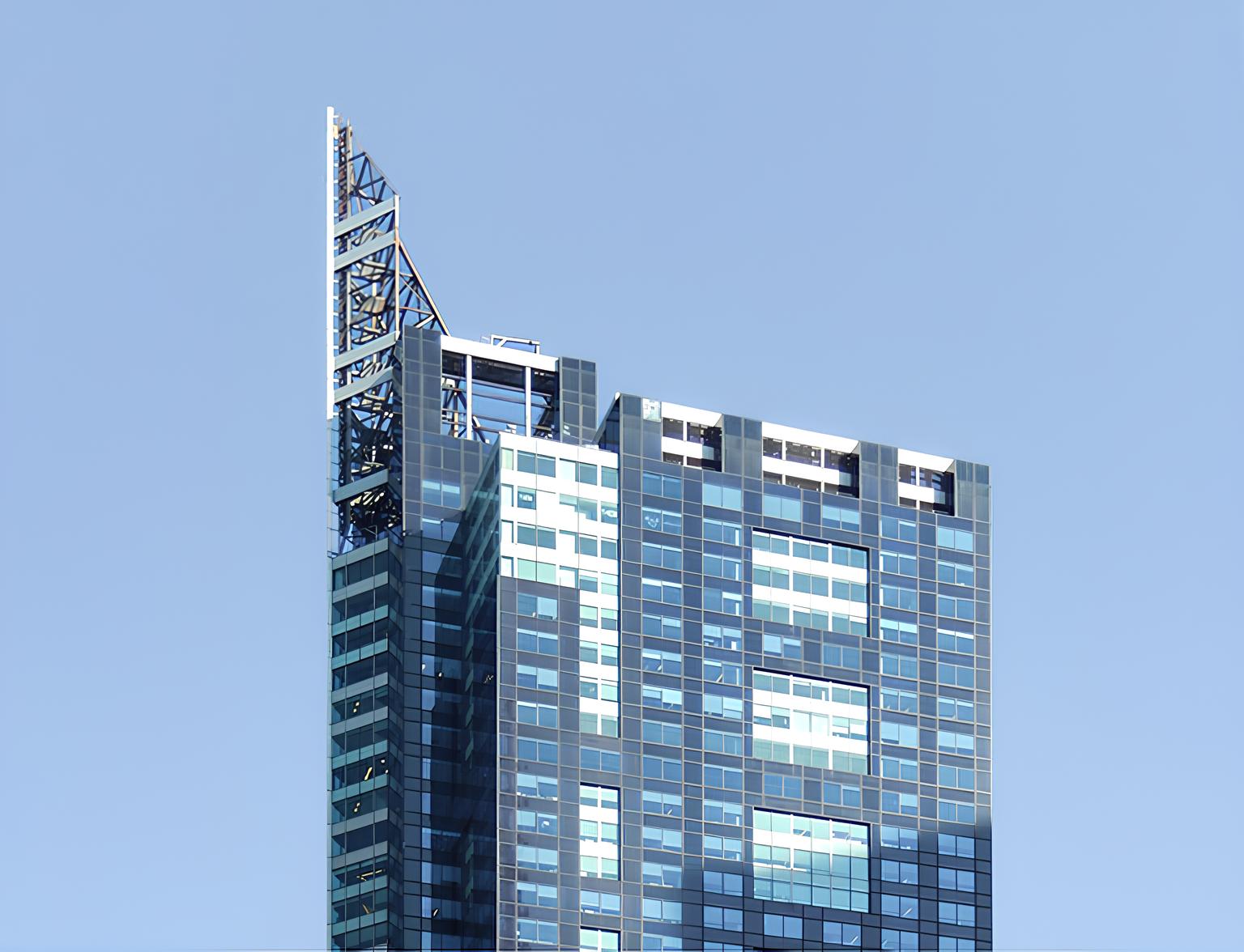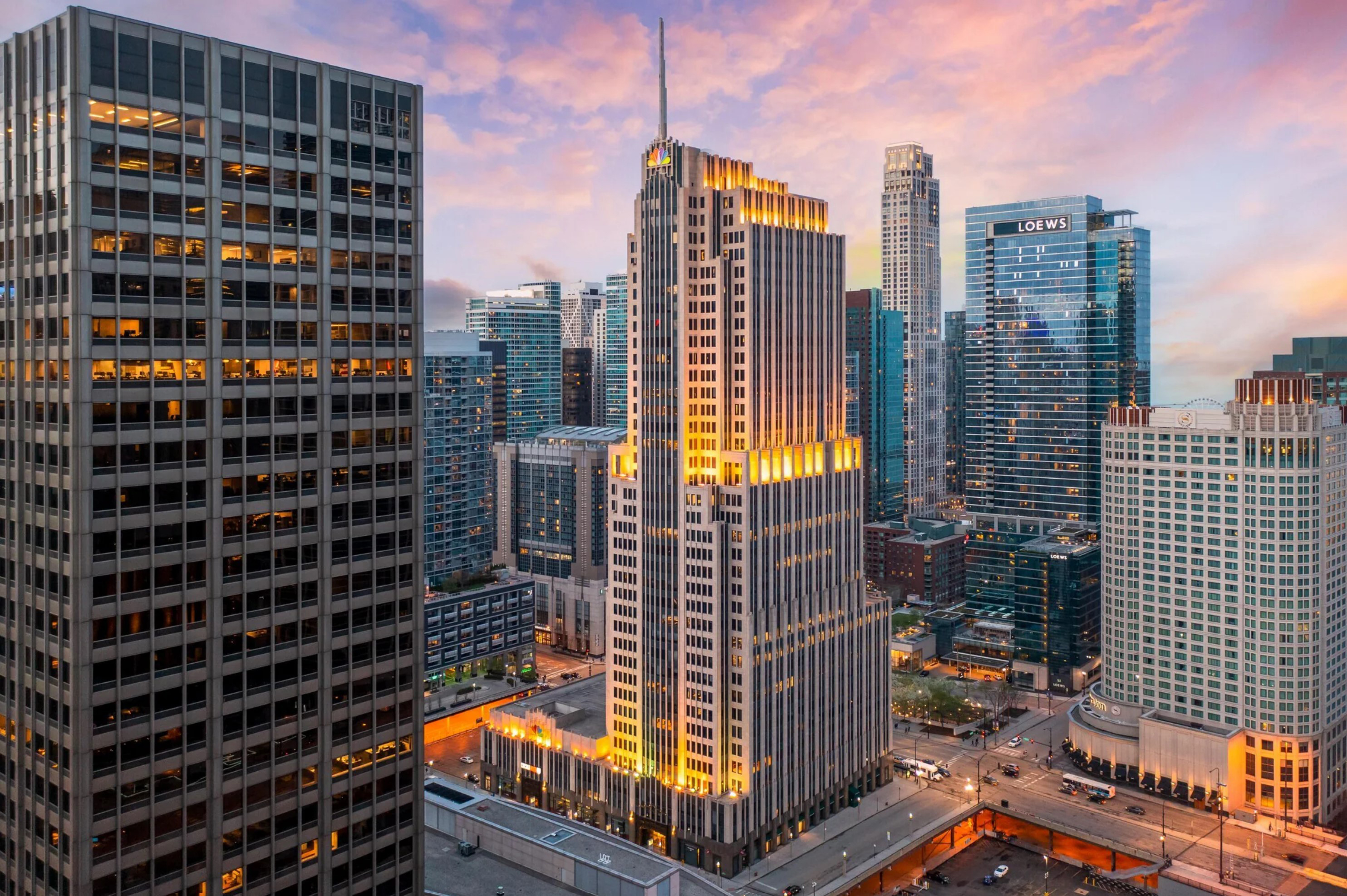The One Montgomery Tower is a Postmodernist skyscraper designed by Skidmore, Owings & Merrill, and built in 1982 in San Francisco, CA.
One Montgomery Tower is not the only name you might know this building by though. It is common for companies to want to attach their names to iconic buildings when they move in, or for the general public to come up with nicknames, and this one is no exception. The One Montgomery Tower is also known, or has been known as, Montgomery Tower, Post Montgomery Center, or Pacific Telesis Tower.
Its precise street address is 120 Kearny Street, San Francisco, CA. You can also find it on the map here.
